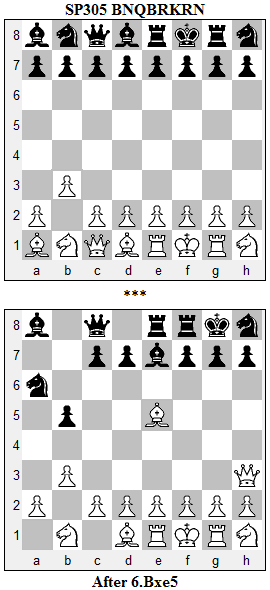Here I had the idea to sacrifice a Pawn by playing 1...e5, which my opponent accepted with 2.Qa3+ Be7 3.Qxa7. The game continued 3...Na6 4.Qe3 b5 5.Qh3, when I sacrificed a second Pawn with 5...O-O 6.Bxe5, reaching the bottom diagram.

What's the compensation for the two Pawns? Black is better developed and will gain further time by threatening the Bishop on e5 and the Queen. The Knight on a6 will come into play via c5 (less likely is b4), after which the move ...Qa6 will initiate an attack on the Queenside. The move ...f5 will activate both Rooks and threaten to advance into White's Kingside, supported by the light-squared Bishop on the long diagonal.
All of these objectives were met in the following moves: 6...Ng6 7.Bb2 f5 8.e3 Nc5 9.Ng3 Qa6. Black sacrificed two more Pawns with 10.Nc3 f4 11.Nh5 Ne6 12.Be2 fxe3 13.dxe3 Qa5 14.Bxb5 Bb4 15.Bxd7, when White was no longer able to cope with the pressure. Short of time, he blundered on the 19th move and promptly resigned.
My note to my first move said, 'Not sure it's sound, but it's definitely interesting!' That's one of the attractions of chess960. There are new ideas to be tried as early as the first move.

No comments:
Post a Comment